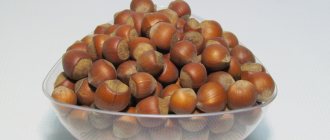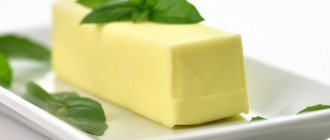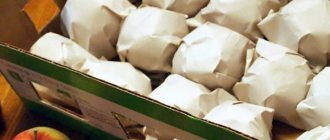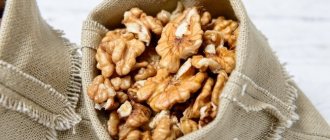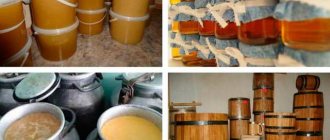Suluguni is a type of brined low-fat cheese from the Georgian region of Samegrelo, which is mainly made from goat and sheep milk (less often from cow milk). Its color will depend on the type of raw material (it can be either white or creamy). This is a moderately salted cheese with a dense layered structure and a sour milk smell. Today, many people are involved in the production of this product. But ancient technologies require a special approach to storing products. Because of this, many are interested in how to store suluguni at home.
Under what conditions should it be stored?
Storage of dairy products occurs under standard conditions and does not require additional explanation. However, there are rules for keeping certain types of products together. If they are not followed, the shelf life, including cheeses, can be significantly reduced.
- Please note that dairy and raw smoked cheeses should be kept separately. In addition, they are isolated from any strong aromas and perishable products.
- Suluguni should be stored in the refrigerator exclusively in brine; the cheese should be completely in the liquid. It is best to use a glass container and cover it with cling film.
- Sudden temperature changes are unacceptable for this product. The optimal storage temperature for Suluguni cheese is +6°C. If it turns out to be lower, the product will lose its original quality. That is why it is not advisable to place it in the freezer.
How to Dry Pistachios If They're Damp
How to make suluguni cheese at home
For a long time I thought that pistachios were impossible to find raw. After all, they are sold everywhere fried and salted, and the most I found was unsalted fried. But then in my hometown of Irkutsk I found raw pistachios! True, their price is such that you can’t get much. More than 600 rubles/kg, I don’t remember the exact price. But their quality is excellent - fresh, germinates quickly, and delicious!
I imagined that raw pistachios would be very different from the roasted ones we are all used to, just as roasted and raw peanuts are very different. But they turned out to be very similar, also with a pronounced pistachio taste. Awesome thing! If it weren't for such a high price, I would eat raw pistachios every day.
They are sold in shells, slightly cracked. Externally, raw pistachios are very similar to fried ones; they are almost indistinguishable. Look at the photo to see what raw pistachios look like in shell, peeled, soaked and sprouted.
Some facts about pistachios:
— Pistachios (Pistácia) belong to the Sumakh family (Anacardiaceae).
— Pistachios are considered drupes.
— Distributed in the Mediterranean, Northeast Africa, Western, Central and Eastern Asia. Some types of pistachios are native to Central America.
— Pistachio trees can withstand temperatures not lower than -25 degrees. They are resistant to drought, love light, grow on gray soils, on mountain-steppe brown soils, on cliffs and slopes.
— The fruits of pistachio trees ripen between September and November.
— Pistachios are grown in the largest quantities in Iran and the USA, as well as in Turkey, Syria, China, Greece, Afghanistan, Tunisia and Italy. Pistachios also grow in the Caucasus and Crimea.
— In some varieties of pistachios, the shell itself cracks when ripe, but in others it does not, so this is done mechanically.
— Pistachios are called 'magic nuts' because they contain a lot of useful substances, and the Chinese call pistachios 'lucky nuts' because when they crack, they resemble a contented smile.
We recommend reading: How to Preserve Red Tomatoes Longer
— It is believed that pistachios relieve fatigue and give vigor; they are also useful for high physical and mental stress. They also have a beneficial effect on the brain.
— Pistachios reduce susceptibility to heart disease, perfectly improve the functioning of the cardiovascular system and relieve heart palpitations.
— Pistachios improve liver function, help cure jaundice, relieve liver and stomach colic, treat anemia and ulcers, are very useful for diseases of the respiratory system, enhance sexual potency, improve sperm quality, increase the mobility and vitality of male germ cells.
— Pistachios are very rich in various vitamins and microelements. In particular, they contain a lot of vitamin B6, phosphorus, magnesium, copper, manganese, potassium, etc.
— Pistachios improve vision and reduce the risk of retinal dystrophy.
- Reduce the risk of cancer.
— Slow down the aging process of the body, promote cell growth and renewal.
— Pistachios also clear bile ducts from blockages.
— Composition of pistachios per 100 grams:
Fiber: 10.3 g
Calorie content: 557 kcal.
How to germinate pistachios:
You need to soak them overnight or for a day, right in the peel. After this, peel the pistachios and place them in damp gauze or a napkin (even toilet paper folded in several rows will do). You need to make sure it doesn't dry out and add a little water if necessary. The pistachios will sprout in a day or two, depending on their freshness.
Outside the refrigerator
Suluguni cheese can be stored at room temperature for no longer than 24 hours. Then it becomes too dry, becomes covered with plaque, and begins to smell unpleasant. In a slightly salted solution, its shelf life can be extended by several days.
- A strong brine is made from 1 liter of water (it must first be boiled and cooled) and 400 g. table salt. The resulting solution is poured into the product and left for storage.
- The cut cheese is kept in a weak saline solution (200 grams of salt per 1 liter of water).
The shelf life of suluguni in brine is quite long. But as a result of such storage, it absorbs a large amount of salt, which significantly worsens its taste.
Compound
To make this traditional Caucasian product, whey or starter culture, which consists of bacteria, is added to milk. In addition, cheese made from goat's milk or some other type of milk contains calcium chloride or pepsin. Thanks to some cooking features, the product is quite tasty, rich in vitamins and minerals. In addition to the starter, the Abkhaz cheese, whose name is “suluguni,” contains enzymes, which is why the taste does not have any extraneous shades and the aroma is neutral. The product contains the following nutrients:
- Phosphorus.
- Proteins and amino acids.
- Healthy cholesterol.
- Sulfur.
- Magnesium.
- Sodium.
- Iron.
- Calcium.
- Saturated fatty and organic acids.
- Potassium.
- Monosaccharides.
- Disaccharides.
How long to store
How long Suluguni cheese can be stored depends on its type.
- Storing white cheese is possible for several weeks and only in a salt solution.
- A smoked product can be kept in a place with low temperature and low humidity for about 60 days, provided that it is in vacuum packaging.
When Suluguni cheese is stored on a refrigerator shelf, in brine, its condition should be constantly checked. In cases where this is required, the liquid is replaced with fresh one.
When store-bought cheese has a long shelf life, it may be an indication that preservatives were used in the cheese making process.
Adjika
One of the most popular Abkhaz seasonings sold in local stores and markets is adjika. Not a single Abkhazian can imagine a feast without this product. There are many varieties of adjika, but the basic composition never changes - it is salt, plenty of garlic and pepper. Abkhazian adjika comes in different colors: green, red, orange and brown, depending on the composition of the fresh and dried herbs used in it.
In our stores, there is also a large selection of this product at the moment, but believe me, homemade adjika will never compare with its store-bought counterpart, since the Abkhaz version of the sauce has a special piquant taste.
Cost: small jar - about 100 ₽.
Storing suluguni in the refrigerator
It is possible to store suluguni in the refrigerator for 2 - 3 months in a container with brine. But if this type of storage is not possible, you should wrap the cheese in film or put it in a glass container with a lid.
- Cheese, while in the refrigerator, must be isolated from perishable products, especially if they have a strong odor.
- Temperature changes negatively affect the quality of suluguni, so the product should not be placed on the refrigerator door.
- It is best to place the product on the inner shelf of the refrigerator, where conditions are maintained at +6°C.
- If a slippery coating or mold has formed on the surface of the cheese, or its color has changed or the smell has become unpleasant, you should stop eating it.
Wine
For several millennia, Abkhazia has been famous for its wine-making culture; they love wine very much, and most importantly, they know how to prepare it correctly. The most popular wines of Abkhazia are the brands “Apsny”, “Lykhny”, “Psou”, “Chegem”, “Bouquet of Abkhazia”, “Anakopia”. Local wines are distinguished by their unique taste, aroma and lightness, as they are produced from special grape varieties that are not found anywhere else.
The wine will be a worthy gift for fans of this drink, but don’t consider buying it by the glass, since no one guarantees the quality of the product. We recommend purchasing the drink in specialized stores. Also, many tourists advise purchasing wines from the Sukhumi factory; excursions and tastings are held on its territory.
Cost: the cost of a bottle of wine is from 220 to 400 rubles.
Do you always follow the correct storage of food/medicines and their product proximity? Yes, of course, this is very important so as not to spend money on your health later. 43.71%
Not really, because there won’t be anything like going to the toilet
24.48%
I look at it by appearance and if I use anything after heat treatment. 31.82% Voted: 286
Smoked suluguni
Smoked cheeses cannot withstand long-term storage, so it is advisable to consume them immediately after purchase. But if some part of it remains unused, it can be stored in cling film.
- In unopened vacuum packaging from the manufacturer, the product can be stored for about 2 months. For exact storage recommendations, please refer to the manufacturer's packaging.
- The shelf life of smoked suluguni after opening the package, wrapped in cling film and kept in the refrigerator, will be about 7 days.
LiveInternetLiveInternet
—Categories
- Cooking (117)
- Health (73)
- Interesting to know (51)
- From the world by thread (51)
- Useful tips (34)
- For lovely ladies (29)
- Our smaller brothers (16)
- Equipment and technology (14)
- Planet Coffee (10)
- Rock Legends (9)
- World of Sports (7)
- Music box (6)
- A little humor (6)
- Mill of Myths (2)
- Peoples of the world (1)
—Search by diary
—Subscription by e-mail
-Statistics
Homemade cheese
Suluguni ripens in brine. This process must be kept under control. It is necessary to constantly check the condition of the cheese and the quality of the brine itself. If the surface of the liquid begins to form a film and an unpleasant odor appears, the brine will need to be immediately replaced with fresh one.
Homemade suluguni, like factory-made ones, should be transported in wooden boxes. The inside of the boxes should be lined with parchment or similar material. This product should be consumed no later than 5 days from the date of manufacture.
Brine cheeses: feta, feta cheese, suluguni, chechil (it is often confused with suluguni) must be stored according to certain rules. Like all dairy products, they have a very short shelf life and can spoil within a short period of time. Therefore, it is advisable not only for those who produce it, but also for consumers of this product to understand the issue of how to store Suluguni cheese.
What to replace
What can replace suluguni? This question occupies lovers of Georgian pickled cheese. Unsmoked Armenian chechil, fresh Italian mozzarella and suluguni are very similar to each other. If we are not talking about haute cuisine, then one variety is completely replaced by another.
In addition, real suluguni and mozzarella are similar in that they are traditionally prepared from buffalo milk. However, the classic product is difficult to find today, and it costs much more. Cheeses made from cow's milk predominate on sale.
Today, something else is more important - the correct technology for cheese production. If the recipe is followed, the cheese turns out to be of high quality. Unfortunately, it is not always possible to buy one. It should be taken into account that many fakes have appeared on the shelves. Ordinary processed cheese, not always of good quality, shaped like suluguni, is sold as real Georgian cheese.
Beneficial features
We figured out what Abkhaz cheese is made from. But what are the benefits of this delicious product? Natural cheese is very useful for children, the elderly and pregnant women, as it has all the qualities that are inherent in fermented milk products. If you consume suluguni regularly, you can significantly strengthen your own immune system, improve the functions of the heart, as well as the nervous system. In addition, doctors recommend consuming Abkhazian mountain cheese to normalize blood composition, increase hemoglobin, and also improve hormonal levels. In addition, the product has a positive effect on nails, skin and hair.
Cooking process
Pour milk into a 15 liter saucepan. The container should be partially filled with water. The liquid heats up to 38 degrees. After this, 50 ml of boiled warm water is taken into a measuring glass, calcium and enzyme are dissolved in it separately.
Then the contents are transferred to a saucepan with milk, the mixture is stirred for a quarter of an hour until a clot is formed. The temperature should be constantly at the same level. After about 5-6 hours, the lump should acquire density, after which it is divided into smaller pieces and transferred to prepared forms with a tray, which is designed to drain the whey.
The curd mass must be transferred into molds with a slotted spoon, the remaining whey is poured into a sterile container. This liquid can later be used to make some other dishes.
The molds with the cheese mass should be combined when the product becomes dense and the liquid has drained. One container must be turned over and placed on another. This action should be repeated periodically, alternating forms, so that the cheese becomes denser.
Ultimately, both halves should be fastened together, forming a single head with round sides. After 8 hours of self-pressing, the product will become firm, dense and elastic. Then it is laid out on a cutting board, sprinkled with salt, after which it is wrapped in cling film and sent to the refrigerator for a couple of hours. Next, the product must be cut into small cubes on a cutting board so that the cheese melts evenly.
The basin is filled with hot water, the temperature of which should be about 85 degrees. Cheese pieces are placed inside. Using two wooden spatulas, the fermented milk product is mixed until the suluguni acquires a stretchy structure. After this, you need to gather the whole mass together with spatulas, knead and form one solid lump. The temperature of the liquid in the container should be high. Continue stirring the cheese mass, while kneading it in the hot liquid, form a thin cake, and quickly roll it up so that the cheese structure turns out to be layered.
The finished base is laid out in a mold with a tray, where it will ripen. The products should be kept in the refrigerator for a couple of hours.
To prepare a 20% brine, you can use whey, as well as the water in which the cheese dough was kneaded. Suluguni is placed in the brine for one day, but after 12 hours it must be turned upside down so that the entire product is salted evenly. The finished piece of cheese must be smoked for about 3-4 hours until a golden crust forms on the surface.


